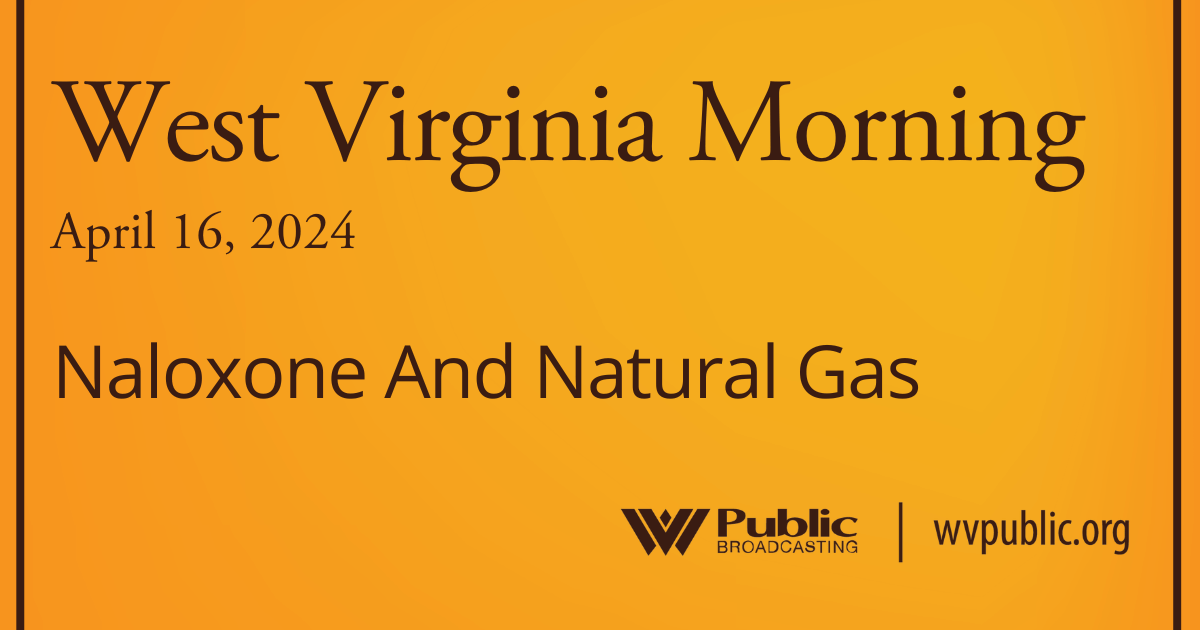West Virginians will be out and about in every corner of the state Thursday in an effort to educate their neighbors and hand out overdose-reversing tools with one goal in mind: Save a Life.
Sept. 8 is Save a Life Day in West Virginia.
West Virginians will be out and about in every corner of the state today in an effort to educate their neighbors and hand out tools with one goal in mind: Save a Life.
“The official name for this day is ‘Save a Life Free Naloxone Day’,” said Joe Solomon, the co-director of Solutions Oriented Addiction Response West Virginia (SOAR). “This September 8 anyone can pick up Narcan in all of West Virginia’s 55 counties at over 180 locations.”
Save a Life Day started out with just two counties in 2020, at the height of the pandemic. But in just two years Save a Life Day has established a presence in all 55 counties.
Solomon’s organization helped spread the event across the state in an effort to get the overdose-reversing drug naloxone into as many hands as possible.
“Naloxone was approved by the FDA 51 years ago,” Solomon said. “The way it works is very simple. It pops off the opioid receptors in your brain and pops them off from the opioid if your brain is flooded with opioids. It allows someone’s breathing to come back online. And that allows their consciousness in turn to come back online.”
Naloxone is a keystone of Save a Life Day because having it readily available can be a literal life changer in a state that Solomon calls ground zero of the opioid crisis.
“In all 55 counties, people want to do something to stop their families and their neighbors from losing loved ones,” Solomon said. “Free Narcan day’s a chance for people to say, ‘Hey, I want you to live, hey, you’re important to our community. Hey, I want you to get through this day, I want you to know that I love you.’”
Naloxone is not the only thing on offer during Save a Life Day. Volunteers and workers also offer education on how to use the medicine, as well as information about local addiction and recovery resources.
Perhaps the most important thing available during Save a Life Day are open minds and a lack of judgment.
Brittany Irick is the coordinator for Monongalia County’s Quick Response Team. Her team works to be on-site after a drug overdose to offer support and resources to those affected.
“Instead of stigmatizing those people who make that choice, let’s give them the tool to prevent a death,” Irick said. “Nobody wakes up and says I want to become addicted to drugs today, I throw my life away. And when people hear that message, I think that it really changes their perspective.”
She points out that overdoses do not discriminate and they are not restricted to substance users.
“As we’ve seen an uptick in fentanyl in pretty much everything all across the state all across the U.S., we’ve realized how important it is to get more Narcan out into the community,” Irick said. “Not just for people who are in active substance use but like college kids, even high school kids.”
Discussions of substance abuse and overdose can get grim at times but in speaking to the people involved in Save a Life Day, there is a palpable energy and excitement to see the event touch every community in the state.
“I’m a little bit partial to helping my state because I think it’s beautiful and full of amazing people,” Irick said. “The fact that all 55 counties are coming together to promote this message like this, this is how we get past this. This is how we get past the drug epidemic.”
There’s a saying in addiction recovery circles: You can’t recover if you’re dead.
Some communities are looking at the longer-term impacts of Save a Life Day. In Logan County, to cap off the day’s activities, organizers like Barb Ellis are preparing for a Recovery Parade to close out the day.
“Once you find recovery, you want recovery for anybody and everybody else,” Ellis said.
Ellis is a peer recovery support specialist for Mountain Laurel Integrated Health Care. She says the day isn’t about one organization or individual, it’s about the community coming together to support each other and address the issue of overdoses together.
“We’re going to be doing a recovery walk,” Ellis said. “We’re asking anybody who is in recovery in our county, or anybody who is a family member of somebody who’s in recovery – because we all know that addiction is an individual thing, it’s a family problem – come walk with them.”
Fellow Logan County recovery specialist and QRT program manager John Kangas says visibility is a powerful tool.
“Being able to have, whether it’s five people, 25 people, 50 people out there walk in the streets, that helps break down the stigma,” Kangas said. “They’ll see these people on the sidelines, will see us walking, “Hey, I know him or I know her. I didn’t know they were in recovery. Holy crap.” Yeah. I mean, we’re everywhere.”
Wherever you are in West Virginia today, be on the lookout for a Save a Life Day event in your community.
